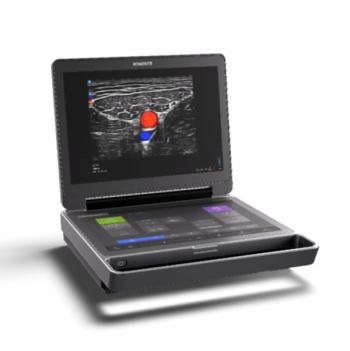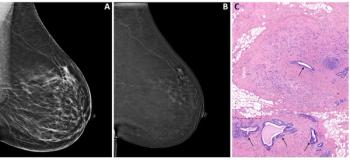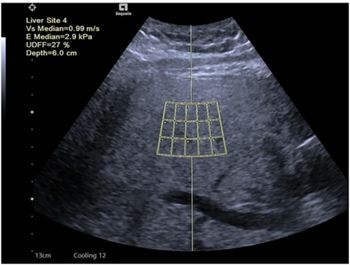
DI SCAN Exclusive: GE exec explains problems sidelining surgical C-arms
GE Healthcare has reassigned 135 staff and hired at least another 50 quality assurance experts to fix equipment problems and processes at facilities manufacturing GE OEC x-ray surgical imaging systems.
GE Healthcare has reassigned 135 staff and hired at least another 50 quality assurance experts to fix equipment problems and processes at facilities manufacturing GE OEC x-ray surgical imaging systems.
The quality problems led GE to sign a consent decree with the FDA last week prohibiting the manufacture and distribution of surgical systems built in Salt Lake City and Lawrence, MA. The decree does not keep GE OEC from servicing or maintaining installed systems.
GE voluntarily stopped shipping these units in September after FDA inspections found noncompliance with the agency's current good manufacturing practice requirements. A statement released in October indicated that the company was trying to resolve the issue quickly (
But a permanent solution for the problem has eluded the company, leading the FDA to seek the consent decree signed by GE and filed Jan. 12 in the U.S. District Court in Utah.
"We stopped these shipments, but the FDA wanted a formal agreement," said Pete McCabe, president and CEO of GE Healthcare, Surgery, who did not predict when the systems will begin shipping again.
"At this point there are too many unknowns for us to give a hard date," he said. "We will begin shipping when we get it right. In the meantime, we will give monthly updates on progress."
In an exclusive interview with DI SCAN, McCabe said the company issued advisory and recall letters to its installed base that cited the problems and explained how to remedy or avoid them. He emphasized that, despite the problems, GE OEC surgical products are safe.
"We have had over 60 million procedures on our equipment in the last six years and in those we have had two incidents reported - a bump and a bruise," he said. "That being said, if the 'process noncompliances' were to continue, I think we could run ourselves into some problems. That is what the FDA believes and, frankly, they are right."
Among the most unsettling possibilities is the potential for system shutdown in the middle of a surgical procedure being guided with the 9900, 9800, 8800, and 2800 platforms. McCabe compared the situation to walking down the stairs at night in a thunderstorm when the lights go out.
"You stop. You don't move. In our case, you hit the reset button and in two-and-a-half minutes the system is back up and running," he said. "That is a risk the FDA, and GE, says needs to be mitigated."
Another problem is a false indicator light showing the x-ray beam is on when, in fact, it is not.
"Uncommanded x-ray is a problem in our industry," he said. "In our case, the light says the x-ray is on after the person takes his foot off the pedal, when really there is no x-ray being transmitted. You can see that by looking at your image, because fluoroscopic images move and if you're not getting a moving picture, you're not getting x-rays."
Letters sent by GE to its installed base of users describe the procedures to be taken in the event of a sudden shutdown or false indicator light, problems that McCabe said occur only rarely. The letters, which detail six other problems, were accompanied by stickers printed with mitigating instructions. Users are instructed to place the stickers on the C-arm consoles.
Among the company's successes are software upgrades that patch problems on the InstaTrak 3500, which, under the worst circumstances, generated an incorrect trajectory for angled or bent tools, such as an angled aspirator, or created flawed surgical plans based on the improper fusion of CT and MR data sets.
For the most part, however, solutions have been beyond the reach of GE engineers. Among the most intransigent is a flawed navigation system built into the OEC FluoroTrak 9800 and 9900 Elite NAV, which the company advised in its recall letters could result in injury to the patient. The only way to avoid the problem is to stop using these systems for surgical navigation until a permanent fix is found, according to GE.
Some persistent problems are more annoying than dangerous. The 9900, 8800, 2800, 9800, and 6800 platforms may stall during their boot cycle, a problem that can be resolved by rebooting the system. Users are advised in recall letters to put the power switch in the "off" position and wait 10 seconds to avoid another stall.
Other problems require more effort to resolve. Incorrect images may be displayed on the 9900, 8800, 2800, 9800, and 6800 platforms when using thumbnails to recall patient images. The correct images might be found by searching other patients' files, according to the recall letters, which advise users to verify that the images displayed are the correct ones.
Patient dose may be incorrectly calculated, displayed, and recorded on the 9900, 8800, 9800, and 2800 platforms while in film or digital spot mode. When accurate records of patient radiation exposure are needed, GE advises users to contact the equipment service provider for assistance in determining the actual measurements.
Quality assurance problems have cut deeply into the GE OEC business, putting its current - as well as its future - surgical portfolio on hold. The FDA has called into question the design control process that the company uses to develop new products. The next-generation 9900 device is already caught in the crossfire. The device, which the FDA cleared in August, has not yet entered the marketplace because questionable design controls were used in its development.
"Any products we developed under those procedures are suspect," McCabe said. "So we have stopped development of the new 9900 until we get our procedures back in line."
GE is mobilizing hundreds of engineers and other staff to come up with permanent solutions, according to McCabe, as well as to fix and document the processes that will avoid such problems in the future.
"It is a tough period for us, no doubt about that," McCabe said. "We are doing everything possible to get this fixed."
Under the terms of the consent decree, GE agreed not to make or distribute surgical x-ray systems until three conditions are met:
- FDA approval of its plan to resolve quality assurance issues identified by the agency has been obtained
- An independent third-party audit of quality assurance procedures at GE OEC's facilities in Salt Lake City and Lawrence has occurred
- Compliance with FDA regulations of GE OEC processes, facilities, and controls has been established to the FDA's satisfaction
"What makes me feel good and proud is that our customers who can wait are waiting, because they know how good our products are and how much better they will be with another six or nine months of engineering time," McCabe said.
Newsletter
Stay at the forefront of radiology with the Diagnostic Imaging newsletter, delivering the latest news, clinical insights, and imaging advancements for today’s radiologists.






























